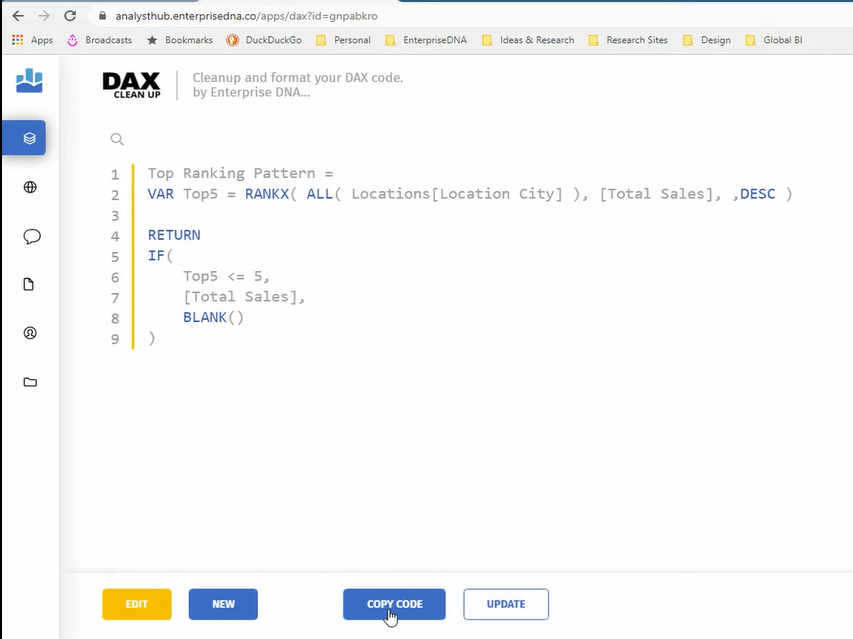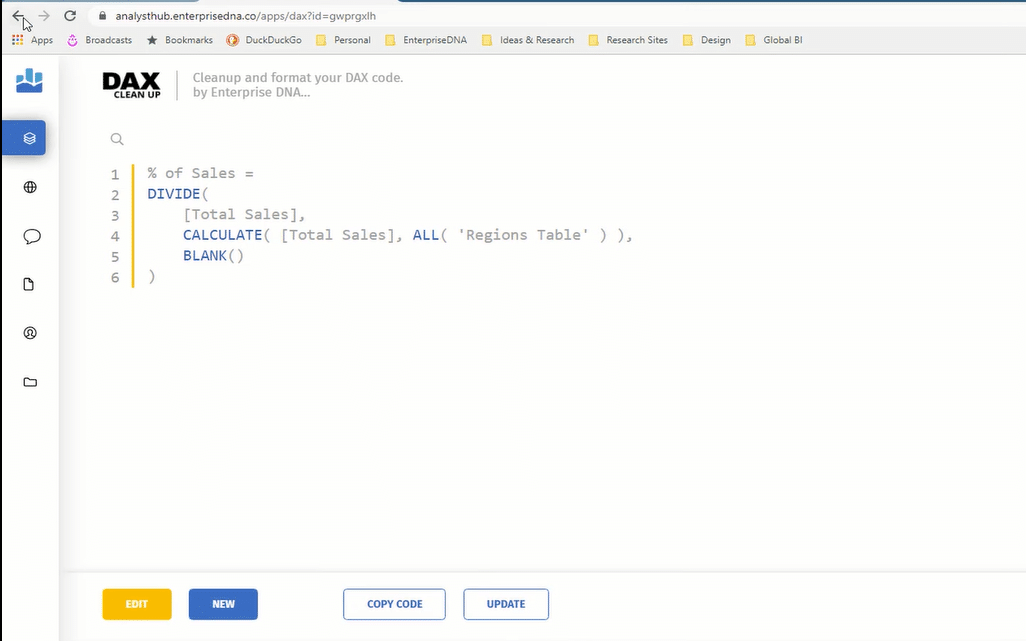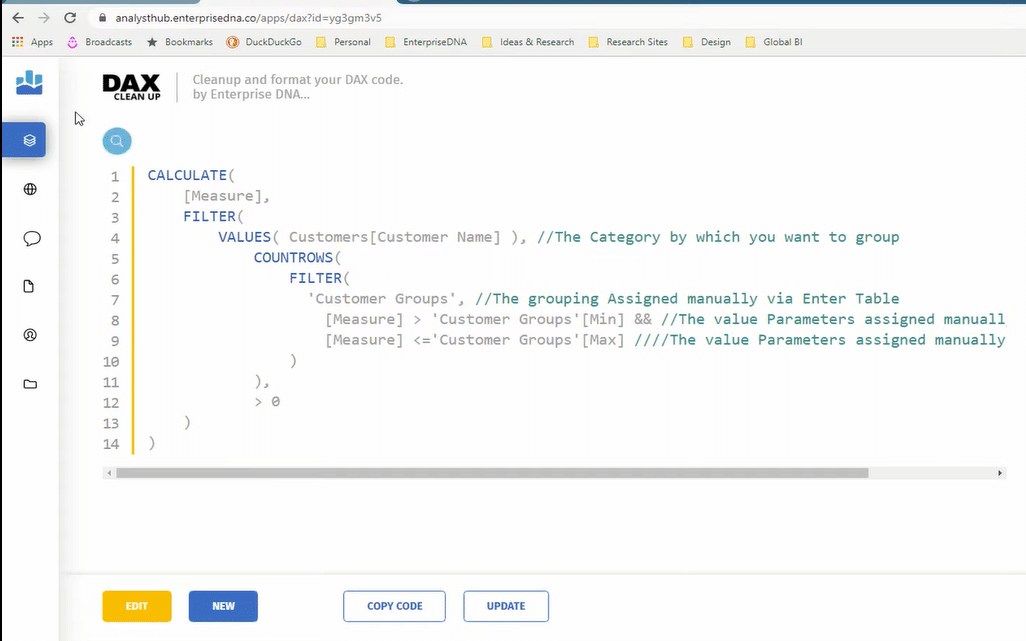For this blog, I’d like to give you an overview of how you can speed up your Power BI development. I always think about ways on how we, at the Enterprise DNA community, can empower ourselves and the Power BI community to develop more quickly inside Power BI. I’ve observed many areas of inefficiencies around development, and I’d like to share some of the key things that I am doing to speed up my own development. You can watch the full video of this tutorial at the bottom of this blog.
To speed up your development, one of the main things you need to master is what’s called formula patterns. These are DAX patterns that you can reuse over and over again. All it takes is subbing in or changing the parameters within the formulas.
Let’s take a look at some examples.
Using Formula Patterns To Speed Up Power BI Development
One of the most common formula patterns that you can see in DAX is the cumulative total. This formula, Cumulative Sales, is an example of a dynamic cumulative total. You can reuse this formula by simply changing the core measure inside this pattern.

And you could sub anything in here depending on what you are analyzing. For example, if I want to analyze the Total Orders, I just sub in the core measure, and then I have a cumulative total of that orders measure.

There’s actually a lot of formula patterns, and you can find them in our learning center – Analyst Hub. We have this app where you can catalog all of your formulas and use them whenever you need.

You can simply copy and paste the formula from the Analyst Hub into Power BI. Instead of having to remember how to exactly write the formula, you can save it here and make it available when you need it.

You can also change the parameters within this formula and come up with a new measure out of it. For example, I want to analyze my Top 5 Product Sales. I just change the parameters of this formula from Locations to Products.

So now I’ve quickly got this measure, and I didn’t even have to think about it. I can then bring it into my report and turn it into a visualization.

Another great formula pattern that you can reuse is the Percent of Sales. You can easily sub in the parameters and create a new measure.

You can go more advanced with your formulas, save them in the Analyst Hub, and then just copy the code to quickly proceed with your Power BI development.

***** Related Links *****
Best Practices For Power BI Report Development
DAX Cumulative Total Pattern In Power BI
Combining DAX Patterns Or DAX Formulas In Power BI
Conclusion
Using common formula patterns and simply subbing in parameters and core measures are key to speeding up your Power BI development. Using the Analyst Hub to catalog your formula patterns is a huge help in making your work even faster.
You don’t need to write complex formulas every time. These are common patterns that you can reuse in different analyses. With the Analyst Hub, you can just copy and paste these DAX patterns into Power BI. It’s almost effortless.
Watch the full video tutorial below for more examples of the commonly used formula patterns and see how I tweak them a bit and come up with a new measure quickly.
Cheers!
Sam






